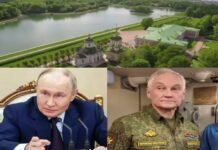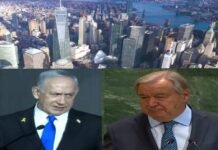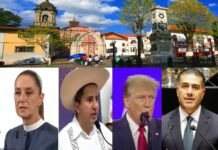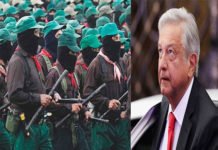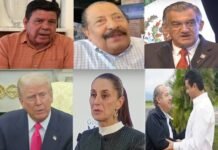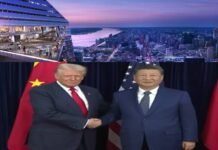*** CHINA Was Despreciated in 2001, For The ‘Arrogant’
*** In Latin America Has Good Relations With Countries
*** “Good Bye” to The ‘Unipolar’ World, Already is Gone?
By DANTE GONZALEZ / Special to The UNIVERSE News And EL UNIVERSO.
Dallas, TEXAS.- In the -Wise Teachings of the Professors- of Eastern Philosophy, such as CONFUCIUS and LAO TZU, among others. There are -very clear- lines of the -correct way to behave- towards our peers, and the world. Based on Humility and Respect: Universal Values.
CHINA as a country has undergone several transformations, according to experts, a few years ago it was the second largest power on the planet. Currently, it is questioning the hegemony of the U.S., and disputes the world leadership, due to the calculated and respectful steps that is taking.
In the recent past, 1886, the -Dragon Country- as some call it, sent its first ambassadors to the Old Continent. A diplomacy, forced Great Britain for having won the Opium Wars, to carry out trade between countries. Moment considered: origin of trade between Europe and CHINA.
The one who broke the -strong chains- of submission that the Chinese people had, was MAO ZEDONG. In 1949, together with the Chinese revolution, he rose to power and in various government structures. With the political instrument, which was the Chinese Communist Party. And that lasts today.

Thus laying the national foundations that serve for development in all points of view, in Modern China. And today it enjoys a position of solidity, in the dispute of the international concert. Although always within a scenario of mutual respect between nations.
Gone was the long Civil War that began in 1927. In which the nationalists of the Kuomintang led by CHIANG KAI SHEK and the communists of the PCCH of MAO ZEDONG clashed, whose victory was the latter. Establishing the People’s Republic of CHINA, proclaimed in BEIJING, on October 1, 1949.
During the period between the death of leader MAO ZEDONG in 1976, until the rise to power of DENG XIOPING. Five years later, it is considered the beginning of political change in CHINA, and definitive opening to the world.
The profound reforms begun in 1978, included: the decollectivization of agriculture, the opening of China to foreign investors, and the granting of licenses to start private companies, among other changes in modern Chinese governance.
For its part, consumption that until then had been regulated, and restricted began to boost the country’s internal economy, managing to activate a private sector that in 2005 represented 70% of the GDP.
In this sense, the Chinese production that has filled the shelves of shopping centers around the world, with ‘Made in China’ items for four decades has begun to be accessible to the local population.
Furthermore, the fall of the communist bloc and the split into new States that immediately embraced capitalism, accelerated the political transformation of the country during the 90s, aware that the only way to create a strong economy was foreign trade and foreign investment.
With a population that is currently around 1.40 billion inhabitants, China has transformed. Since 1978 into a society less dependent on agriculture, capable of being at the forefront in key sectors such as finance or technology.
An economic expansion that only during the 90s had certain barriers abroad, raised after the sanctions of the international community for the Tiananmen massacre of 1989.
However, although within the party there was a deep division among the supporters of the reforms initiated by XIAOPING, and those who were betting on returning to the strictest communist model, precisely the end of the Cold War ended up consolidating the new direction.
Since, CHINA became part of the World Trade Organization (WTO) in 2001. There was no shortage of envious, arrogant and ignorant people who saw to CHINA, as a country, that would only occupy a place, in space. Thing that happened the opposite, yesterday and now.

Today it is the first trading partner of Brazil, Chile, Peru, Uruguay and Argentina, and has free trade agreements with Chile, Costa Rica and Peru. It began talks with Ecuador in February 2022 to reach an agreement.
According to figures from the Inter-American Dialogue, total trade between China and Latin America and the Caribbean increased from almost US$18 billion in 2002 to US$318 billion in 2020. That same year, China’s imports from the region amounted to US$168 billion, while its exports totaled US$150 billion.
In the financial sphere, the Asian giant has become an alternative source to the private financial market and the Bretton Woods institutions. The China Development Bank and the Export-Import Bank of China are among the region’s main financiers.
Between 2005 and 2020, cumulative loans amounted to more than 137 billion, with Venezuela, Brazil, Ecuador and Argentina being the main recipients.
As for China’s investments in the region, these amounted to 140 billion between 2005 and 2021, of which 64 billion correspond to Brazil and 25 billion in Peru, according to data from the Inter-American Dialogue.
In the international context, without any stridency or fuss, CHINA of XI JINPING is positioned as an important actor in the current course of the world. Together with VLADIMIR PUTIN’s RUSSIA and JOE BIDEN’s U.S., according to geopolitical experts.
On the scientifically rigorous bets of expert in geopolitics. They estimate that the world will soon be three poles (U.S., RUSSIA and CHINA). With this, they say “goodbye” to the perverse unipolar concept of the West, which is still damaging in several parts of the world (GAZA, YEMEN, UKRAINE, etc.).

